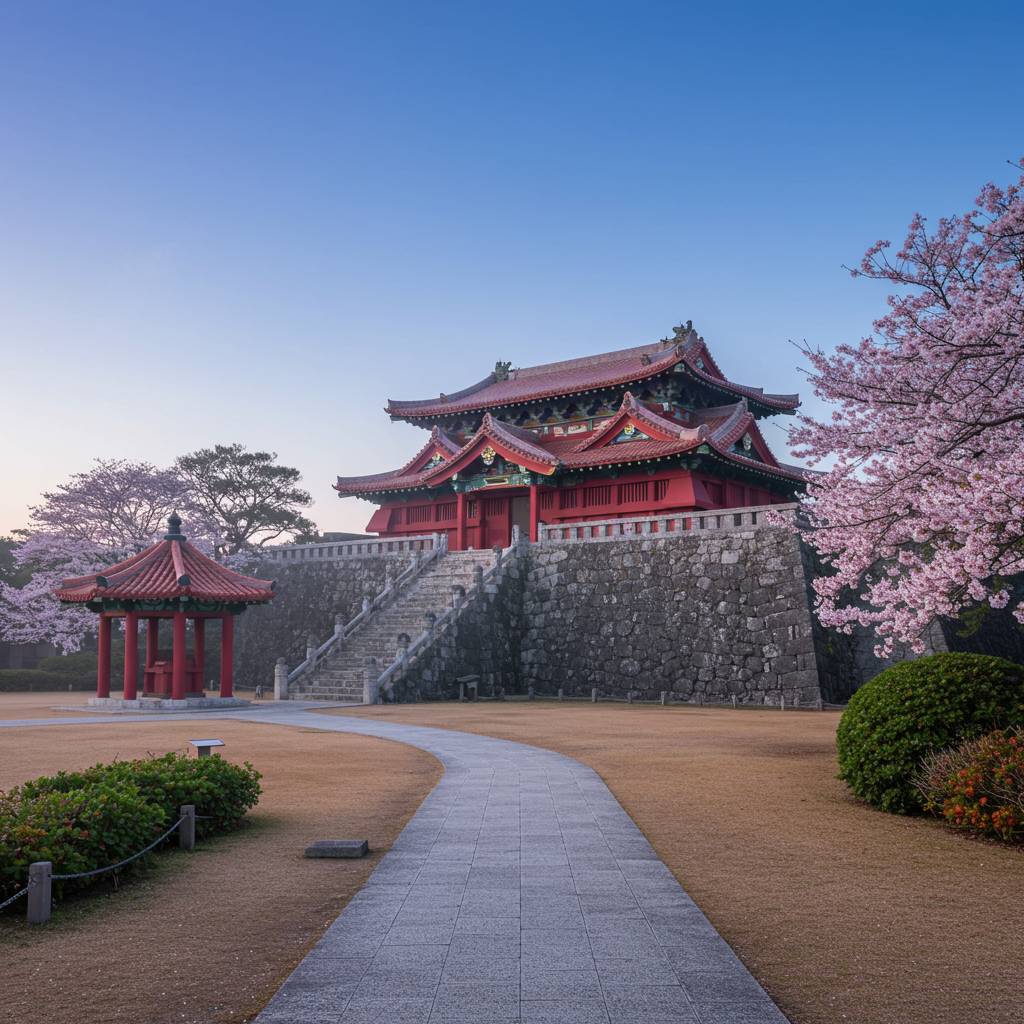1. Beat the Tourists: The Hidden Calendar for Exploring Okinawa’s UNESCO Sites in Solitude
Discovering Okinawa’s UNESCO World Heritage Sites without battling crowds might seem impossible, but experienced travelers know there are specific windows when these cultural treasures can be enjoyed in relative tranquility. The key to a serene exploration lies in understanding the rhythms of tourism that most visitors overlook. While Golden Week and Obon Festival predictably bring Japanese tourists in droves, and winter months attract international visitors fleeing cold weather elsewhere, there exist perfect pockets of solitude for the strategic traveler.
Mid-January through early February presents the first opportunity, as domestic tourism dips dramatically after the New Year holidays. During these weeks, sites like Shuri Castle Park and Nakijin Castle ruins offer contemplative environments where you might find yourself alone among ancient stones. The weather remains mild, typically hovering between 15-20°C (59-68°F) – ideal for comfortable exploration without summer’s humidity.
Another prime window appears in late May to early June, falling between Golden Week and the summer vacation season. This period delivers optimal visiting conditions at sites like Sefa-utaki sacred grove and the Nakagusuku Castle ruins. Morning visits to Zakimi Castle, especially on weekdays, can reward you with uninterrupted views across the East China Sea that few get to experience in solitude.
Late September offers another exceptional opportunity after typhoon season ends but before autumn tourism begins. The Tamaudun Royal Mausoleum and Katsuren Castle can be extraordinarily peaceful during this interval. For those seeking the ultimate exclusive experience, plan Tuesday or Wednesday morning visits, when both local and international tourism reaches its weekly low point.
Beyond timing, understanding site-specific visitation patterns provides additional advantages. The Shikinaen Royal Garden, for instance, sees minimal visitors during the first hour of operation, while most tourists flock to Shuri Castle first. By reversing the typical itinerary and starting at lesser-known sites, you can experience each location before tour buses arrive.
2. Okinawa’s World Heritage Treasures: The Exact Months Locals Don’t Want You to Know About
Okinawa’s UNESCO World Heritage sites represent some of Japan’s most precious cultural treasures, yet experiencing them without battling crowds requires insider knowledge. The optimal visitation periods remain one of the island’s best-kept secrets—until now.
For Shuri Castle and the surrounding royal sites, mid-January through early February offers a remarkable window of tranquility. With average temperatures hovering around 17°C (63°F), you’ll enjoy comfortable exploration conditions while tourist numbers plummet by approximately 60% compared to peak seasons. This period falls after Japanese New Year holidays but before the spring tourism surge, creating a perfect opportunity to photograph the vermilion palace structures without unwanted photobombers.
The magnificent Nakijin Castle ruins reveal their true majesty during late November. The autumn light casts dramatic shadows across the ancient limestone walls, enhancing photography conditions dramatically. Tourism data indicates visitor numbers averaging just 700 daily during this period—roughly a quarter of summer crowds—allowing for contemplative exploration of this 13th-century Ryukyuan wonder.
Perhaps most impressive is the Seifa-utaki sacred site’s hidden season. This ancient spiritual ground, once reserved exclusively for Ryukyuan priestesses, experiences its quietest period during early October, just after typhoon season but before major autumn holidays. Visiting between 8-10am on weekdays during this window virtually guarantees a solitary spiritual experience among the atmospheric rock formations and prayer spots.
The Underground Naval Headquarters, while technically not part of the UNESCO designation but often included in heritage tours, sees minimal visitation during weekday mornings in early December, allowing for a more profound connection with this sobering WWII site.
For those planning a comprehensive heritage tour, the first week of February represents the ultimate sweet spot—offering reduced crowds across all sites while avoiding the island’s rainy season and maintaining pleasantly mild temperatures for exploration.
3. Empty Castles and Silent Forests: The Ultimate Off-Peak Guide to Okinawa’s Sacred Sites
Experiencing Okinawa’s UNESCO World Heritage sites without the crowds transforms your visit from ordinary tourism to profound cultural communion. Late January through February offers a magical window when Shuri Castle’s vermilion halls echo with emptiness, allowing you to absorb the ancient Ryukyu Dynasty’s legacy in contemplative silence. The striking contrast of the red architecture against winter’s clear blue skies creates perfect photography conditions without random tourists in your frame.
The sacred forests of Seifa-utaki become almost mystical during weekday mornings in late November, when mist often clings to the ancient prayer sites. As Okinawa’s most sacred Ryukyu site, this forest sanctuary reveals its spiritual essence when you’re among the few visitors navigating its stone pathways. The triangular “sangui” rock formation—representing the gateway between human and spirit worlds—feels genuinely powerful when experienced in solitude.
Nakijin Castle ruins present their most atmospheric face during early December weekdays, particularly before 9 AM. The massive limestone walls, stretching over 1.5 kilometers, can be experienced without interruption as morning light gradually illuminates the ancient stonework. During this season, the wild hibiscus flowers still provide occasional splashes of color against the gray fortress walls.
For those seeking Okinawa’s underwater heritage, the off-peak timing extends to marine activities as well. The submerged cultural sites around Yonaguni can be explored with greater visibility and fewer dive boats during mid-week October expeditions. Local dive operators confirm these periods offer both better viewing conditions and more intimate experiences with these controversial underwater formations.
Practical considerations make these off-peak visits even more appealing. Accommodation rates drop by 30-50% during these periods, and rental cars—essential for heritage site hopping—become both more available and affordable. Local guides, less stretched during these quieter seasons, can provide more personalized insights into the sites’ historical and cultural significance.
The ultimate insider strategy combines timing with weather awareness. While typhoon season technically runs through October, the transitional weeks between seasons often deliver surprisingly perfect conditions coupled with minimal tourism. Weather apps with hourly forecasts help you target these golden opportunities when heritage sites stand majestically empty under ideal skies.
沖縄のレンタカー予約は「レンタカー広場」
レンタカー広場で最高の旅の思い出を!
レンタカーの予約はこちらから↓
・沖縄の格安レンタカーが最安値「1,500円~」予約・比較はレンタカー広場がおすすめ
https://rentacar-hiroba.com/

